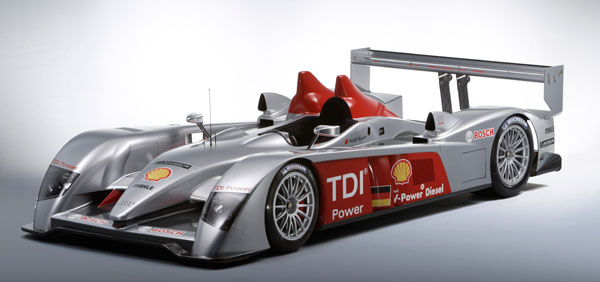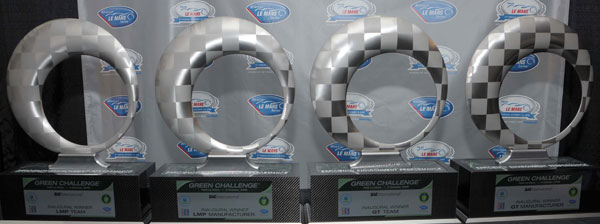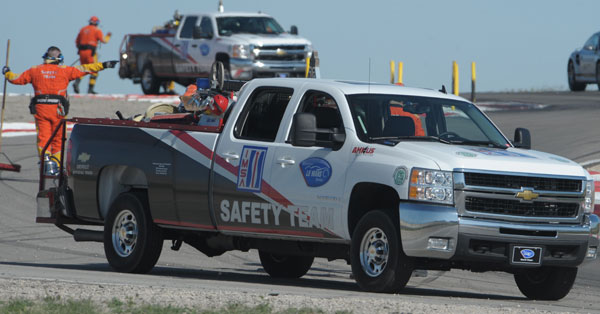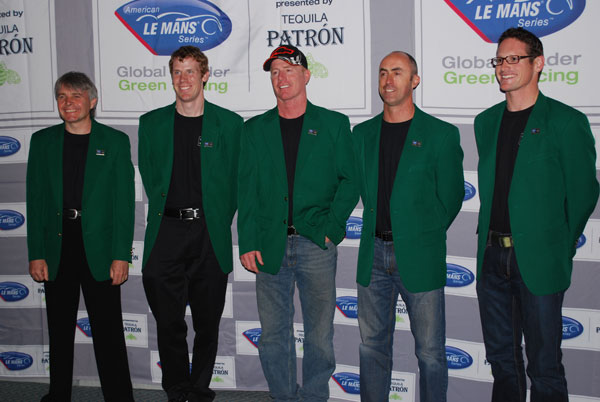The American Le Mans Series presented by Tequila Patrón takes a moment to look back on its Green Racing History. Recently announcing its Green Dream Team during the Tequila Patrón American Le Mans Series at Long Beach race weekend, learn how David Brabham, Johnny O’Connell, Chris Dyson, Paul Drayson and Gunnar Jeannette were called to be the newest ambassadors of the sport.
2004
Patrón Highcroft Racing’s David Brabham writes a letter to Series’ Founder Dr. Panoz. The letter encourages and promotes the Series to permit teams and manufacturers to test and develop innovative and efficient technologies as well as alternative fuels during race competitions. Brabham claims his hometown is none-other-than Planet Earth.
2005
The DOE and EPA approach SAE International about using motorsports to address alternative energy issues. SAE International recommends the American Le Mans Series.
2006
Audi unveils its revolutionary R10 TDI diesel race car, winning at the 12 Hours of Sebring, the 24 Hours of Le Mans and Petit Le Mans in its inaugural year.

Members of the DOE, EPA, and SAE International along with several former leading automotive executives form the Green Racing Work Group to explore and devise elements for green racing and its protocols.
2007
The American Le Mans Series goes green, introducing an ethanol blend (E10) for all non-diesel cars to use in competition. The diesel cars compete as well, being powered by a special ultra-low sulfur diesel fuel from Shell, while featuring liquid components made from natural gas.
2008
At the North American International Auto Show, the DOE, EPA, and SAE International declare the American Le Mans Series the only series to meet its green racing criteria. The Series announces its adoption of the Green Racing Protocols and announces the launch of a Green Challenge™ award at Petit Le Mans to acknowledge teams that go the farthest, the fastest with the smallest environmental footprint.
The Green Challenge™ formula is devised by Argonne National Laboratory. It utilizes more than 30 pieces of data.

Penske Racing’s Porsche RS Spyder (LMP) with direct fuel injection wins the prototype class running E10 and Corvette Racing (GT), one of four cars using the newly introduced cellulosic E85, wins in the GT class at the world debut of the Green Challenge™.
The Series begins planting trees to offset the carbon emission from race day competitions.
Lord Paul Drayson races for the first time with the Series. Drayson, the Minister for Science and Innovation for Great Britain, is the owner and driver for Drayson Racing. Drayson uses motorsports as a platform to campaign the use and development of alternative fuels and sustainable technology.
Johnny O’Connell, the leading driver in starts for the Series, begins racing on E85 with Corvette Racing. His teammates in the sister Corvette – Olivier Beretta and Oliver Gavin – claim the first win in the Series in their debut race with the fuel at St. Petersburg.
2009
Michelin creates an extension to the Green Challenge™ – the MICHELIN® GREEN X® Challenge – and awards a winning prototype and GT team at every race. Scoring uses the Green Challenge formula and criteria. At the season’s end, Lowe’s Fernandez Racing (LMP) and Flying Lizard Motorsports (GT) claim the team championship titles from Michelin.
Utilizing the same scoring process, the government agencies launches the Green Challenge™ Championship aimed at awarding vehicle manufacturers that bring the best production-bound technology to the American Le Mans Series. In the manufacturer competition, Acura (LMP) and Porsche (GT) claim championship titles from the DOE, EPA, and SAE International.
The Series announced G-Oil, the official motor oil of the Series and IMSA, its sanctioning body. G-OIL is the world’s first and only bio-based and ultimate biodegradable motor oil approved by the American Petroleum Institute. It is featured in the Porsche Cayenne Safety vehicles during every race weekend.

Corsa Motorsports, in conjunction with the Ginetta-Zytek group, develops and deploys the Series’ first-ever, revolutionary gas-electric hybrid prototype race car. The hybrid finishes third overall at Lime Rock Park and fourth in the season finale at Mazda Raceway Laguna Seca.
Dyson Racing’s LMP2 No. 16 Lola-Mazda runs “unclassified” at Petit Le Mans and Mazda Raceway Laguna Seca to test a blend of isobutanol. This is the first use of isobutanol in the Series.
2010
The Series continues to plant trees in the United States. Through its environmental partner American Forests, the Series and its teams, manufacturers, corporate partners and fans support the Global ReLeaf campaign.
Isobutanol is approved as the fifth approved alternative energy/fuel of the Series. Owner and driver for Dyson Racing, Chris Dyson, proves the fuel competitive and efficient by finishing on podium at Sebring and Long Beach.
Gunnar Jeannette runs Green Earth Team Gunnar on G-Oil. Jeannette claims the team’s first pole in LMPC history at Sebring and won in class during the 100 minute Long Beach street race a month later.

Green Dream Team announced at Long Beach during the “Race Has Gone Green” Conference. Members include David Brabham (Patron Highcroft Racing), Johnny O’Connell (Corvette Racing), Chris Dyson (Dyson Racing), Paul Drayson (Drayson Racing) and Gunnar Jeannette (Green Earth Team Gunnar)
© RIF | ALMS
 Racing In Focus Motorsport and Events Coverage | Racing News, Results, Photos.. from Formula 1, American Le Mans, NASCAR, IndyCar and Canadian racing
Racing In Focus Motorsport and Events Coverage | Racing News, Results, Photos.. from Formula 1, American Le Mans, NASCAR, IndyCar and Canadian racing
